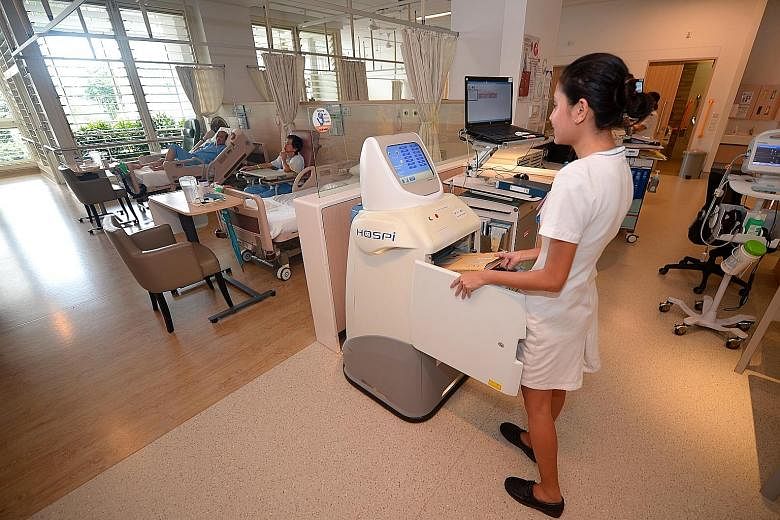Singapore is on track to having one of the most IT-enabled healthcare systems in the world, said Mr Bruce Liang, chief executive officer of Integrated Health Information Systems (IHiS).
He was speaking to the media on Monday, ahead of the National Health IT Summit yesterday.
Mr Liang, the head of the Ministry of Health Holdings' information technology company, said yesterday at the summit that the advent of IT is inevitable, and urged the audience of 600 to "get on or get run over".
By 2021, when the Health IT Masterplan is completed, patients, doctors and healthcare providers will all be hooked up in a vast electronic database.
Conditions of patients with complex chronic ailments can be easily monitored in their homes and, if intervention is needed, this can be quickly provided so the patient does not end up in hospital.
All citizens will have access to their health records, either on their mobiles or computers. These records will make it easy for any doctors they see to know their medical histories and treatments.
Patients who need a nurse to help, for example, to change a catheter or wound dressing, will be able to get one through an app.
When there are changes in healthcare subsidies - for example, the subsidy given during the bad haze days in 2015 - general practitioners should have the information updated immediately in their clinic computers.
Some of these enablers are already available. For example, last month, IHiS started a programme at public hospitals to identify patients at high risk of needing to be readmitted.
These patients are given better post-hospital support to prevent their conditions from deteriorating and requiring hospital care. It has already identified 2,500 patients who need the extra care.
They are identified using over 1,000 indicators, including age and frequency of admission, and length of hospital stay. Mr Liang said it has a 70 per cent precision rate, which is among the best in the world.
The National Electronic Health Records, where a person's medical records are shared among all public health institutes as well as some private ones like community hospitals, is already available.
However, it is not yet comprehensive as it lacks the majority of data from private healthcare.
Once completed, it will make it easy for patients to move from primary to tertiary care throughout the country as any doctor treating the patients would have full access to their medical records.
With a large database, the system will also be able to pick out treatments that work better. Such information can be shared to provide better quality care.
Frail patients can use their mobile phone app to "order" a nurse for a house visit, a medical escort or healthcare supplies like diapers, or even meals and personal care such as a haircut at home.
Mr Liang also assured that the system has many layers of security to protect against cyber threats.
Salma Khalik


